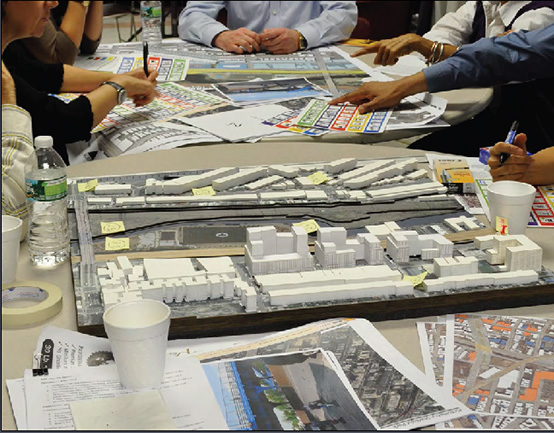Process and Progress 5: Brooke Singer, SLO Architecture, NYC Department of City Planning, 596 Acres, BRAC’s Teen Project Studio
On View from May 31 – June 22
On view from May 31st, 2013 – June 22nd, 2013
GALLERY HOURS: Wednesday–Friday, 3pm–6:30pm / Saturday, 12pm–5pm FREE ADMISSION
Bronx, NY, May, 2013 —Bronx River Art Center (BRAC) is proud to announce Process and Progress: Brooke Singer, SLO Architecture, New York City Department of City Planning, 596 Acres and BRAC’s Teen Project Studio. This is the fifth and final exhibition in the series Process and Progress: Engaging in Community Change. Over the last eight months, this series has provided a framework for artists, architects, community organizations and neighbors to engage with systems of urban development in the Bronx and beyond. This exhibition will be presented in BRAC’s temporary gallery space in the Mott Haven neighborhood of the Bronx.
Process and Progress: Engaging in Community Change is an interdisciplinary exhibition series that highlights the Bronx River Art Center’s development during a time of significant structural and cultural change in the borough. BRAC’s major building renovation project, now underway, is leading the way for more environmentally sustainable and technologically advanced designs within the West Farms community.
Process and Progress 5: Brooke Singer, SLO Architecture, NYC Department of City Planning, 596 Acres and BRAC’s Teen Project Studio highlights strategies employed by architects, artists, urban planners, neighborhood activists, and local youth to articulate and improve the environmental and infrastructure challenges that face our South Bronx community. This exhibition expands the traditional notions of what an “art exhibition space” is by incorporating a diverse group of voices to enhance and enrich complex conversations about the role of art, community organizing, and urban planning within our borough and beyond.
In her online data visualization project Superfund365 and photo documentary series Sites Unseen, artist Brooke Singer maps toxic contamination sites throughout the country. These projects trace the development and confluence of industry, economy, ecology, land use, and environmental health over time, creating an alternative reading of the history of the United States.
